Factorio Space Age: A Whole Universe to Explore and Automate
One of the best expansions to any game I have ever experienced

In October 2024, the long-awaited Factorio Space Age expansion was finally released. First announced in early 2021, the developers took their time to implement and polish the new features to release a masterpiece.
The DLC has an unbelievable amount of new challenging content. The base game takes place on an alien planet, but even though the goal is to launch a rocket, you can never escape. As the name might suggest, the Space Age expansion allows just this: You can launch into space, build moveable space platforms with asteroid mining, and travel to 4 new planets with unique mechanics. The already impressive logistics system of the base game now also extends into space and you can design complex interplanetary supply chains to ship items between your different bases.
Alongside the DLC, the base game was also updated to version 2.0, which introduced new features, improvements, and quality-of-life changes for all players without the expansion.
Almost two months into the expansion, I’m still on my first playthrough because there are so many things at your disposal for exploration and experimentation.
Space platforms
Before the DLC, launching a rocket meant “winning” the game and therefore was near the end of the tech tree. In Space Age, however, the rocket tech unlocks earlier and building rockets is cheaper because the new content only starts from there.
You can build space platforms in orbit around Nauvis (the original planet), but all building materials have to be launched up via rockets with limited capacity. Just like the rest of the game, space platforms are fully customizable and you can create interesting and unique designs. On them, you can mine small asteroids and manufacture space science to continue in the tech tree.
This is only the beginning because space platforms can move; you can add engines and make rocket fuel to leave the safety of Nauvis’ orbit and travel to other planets. I went into the DLC with minimal spoilers, so my first attempt to reach another planet ended in disaster because I didn’t know that the way was filled with bigger asteroids that damage your ship if they aren’t destroyed fast enough.
I have since designed a few different space platforms and have seen screenshots of other players with very creative designs including pretty much every famous sci-fi spaceship you can imagine.
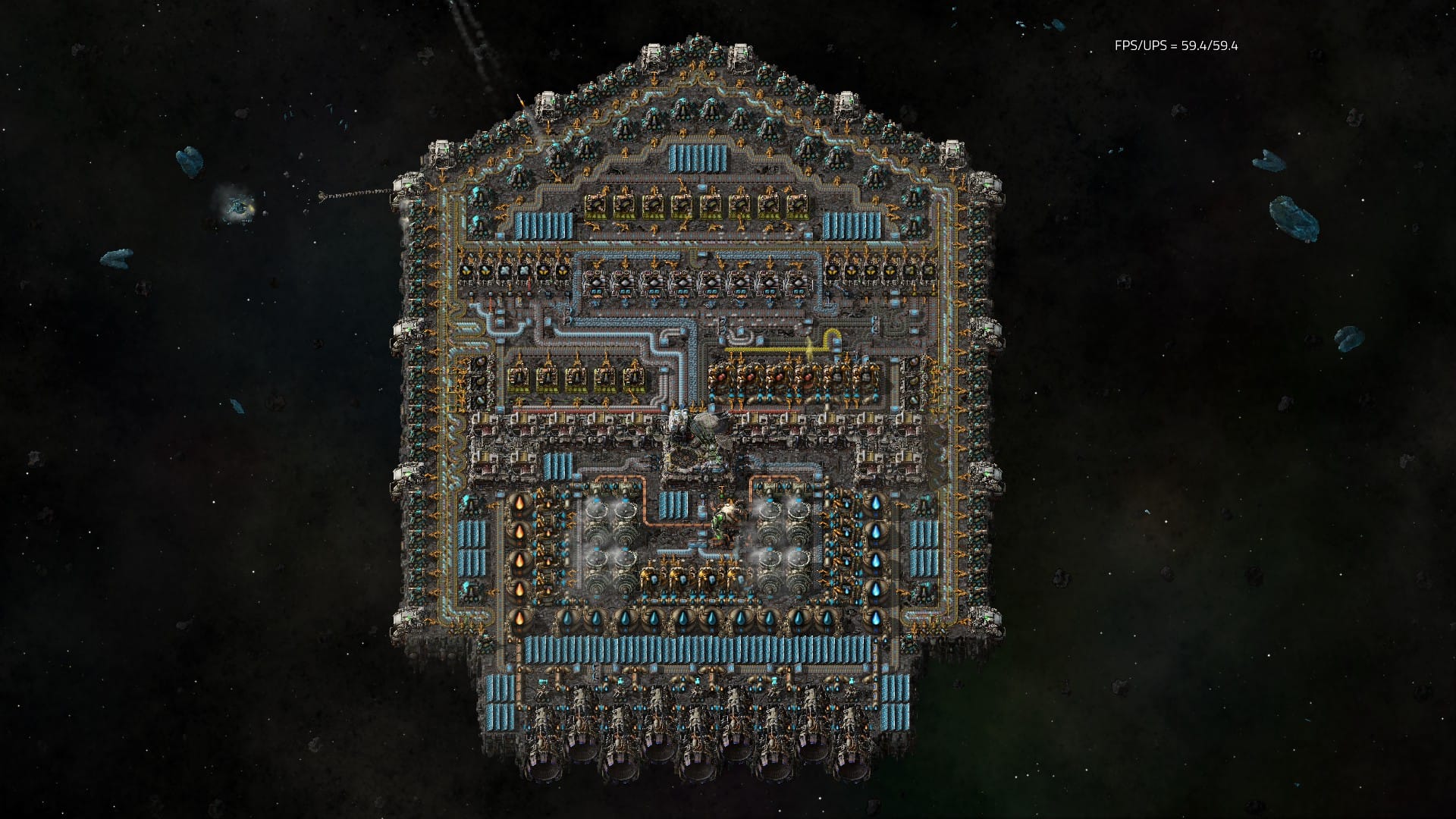
Alongside the DLC, the base game was also updated to version 2.0, which introduced new features, improvements, and quality-of-life changes for all players without the expansion.
New planets
With your fully-fueled and heavily-armed space platform, you can travel to your first of the four new planets included in the expansion. Every planet has unique mechanics and a science pack that can only be assembled there. You have to visit all of them and build at least a decently-sized factory powerful enough to create enough science to ship back to your main base.
Vulcanus
Vulcanus is a volcanic planet with lava lakes and sulfuric acid geysers. You can find calcite and tungsten ore deposits, but besides coal, no other basic resources like iron or copper can be found. You can, however, pump lava into the new foundry building and extract molten iron and copper from it, which can be cast into plates and start your production lines from there.
The planet is also home to a new terrifying enemy: Demolishers. They are very large and hard-to-kill worms, but they live in clearly marked areas on the map and don’t venture outside unless provoked.
Vulcanus is generally intended to be the first planet you go to, but it’s not enforced by the game and you can choose any of the first three planets.
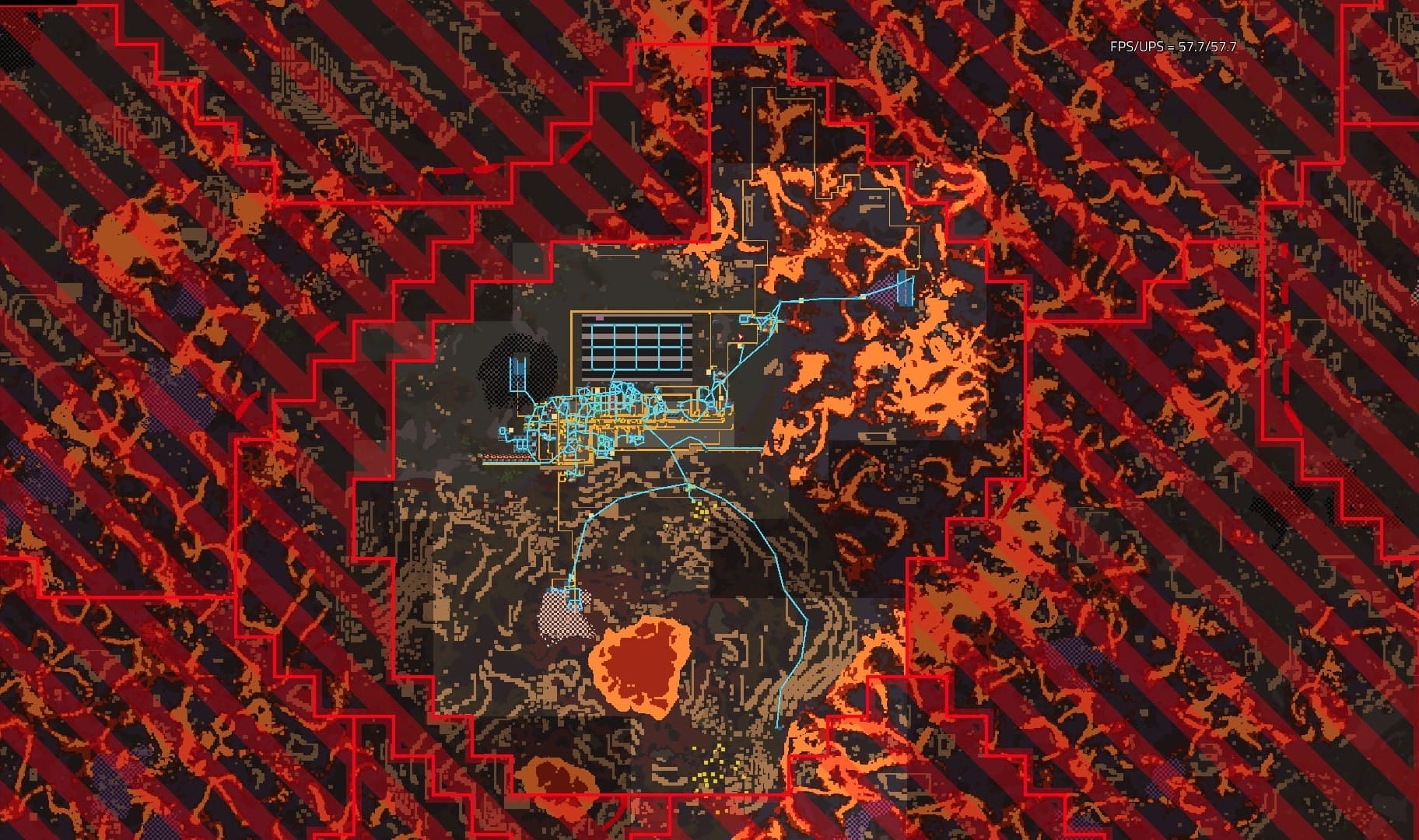
Gleba
Gleba is a moist, agricultural planet with fungal hills and swampy lowlands. Only stone and water exist as basic resources, while everything else can be farmed from alien plants. I like farming games and mixing agriculture with Factorio sounded fun, so I chose Gleba as my first planet: It was a rough choice.
In normal Factorio, you can store all items indefinitely. It’s totally fine to create 10,000 engines because you might need them later. On Gleba, however, all native products - including science packs - spoil. This means you have to rethink your whole approach to the game and design completely new assembly lines that can deal with the spoiling items.
In addition to the difficult production lines, Gleba has also the most difficult enemies of all planets: Pentapods, which are large five-legged creatures that can walk over walls and deal AoE damage. Vulcanus’ Demolishers are technically stronger, but since they don’t leave their areas you can ignore them until you want to take them on. Gleba’s enemies, however, are attracted by spores, which are released from biological processes in your factory, similar to how Nauvis’ enemies are triggered by pollution.
Once you decide to go to another planet and drop down to the surface, you are stuck there until you can build a new rocket to launch back up to your space platform. I barely managed to cobble together a rocket and escape. While I went to the other planets, most of my base on Gleba was overrun by enemies and I had to rebuild when I returned.
However, after playing on Gleba a bit more, I have to say it’s my favorite new planet. It’s very unique and once you get used to the spoiling mechanic, it’s fun to come up with designs that can handle it. I also generally play on the Death World setting in normal Factorio (although I’m playing on default settings for my Space Age discovery run), where you get a lot more enemies, so the constant threat of the enemies on Gleba adds excitement.
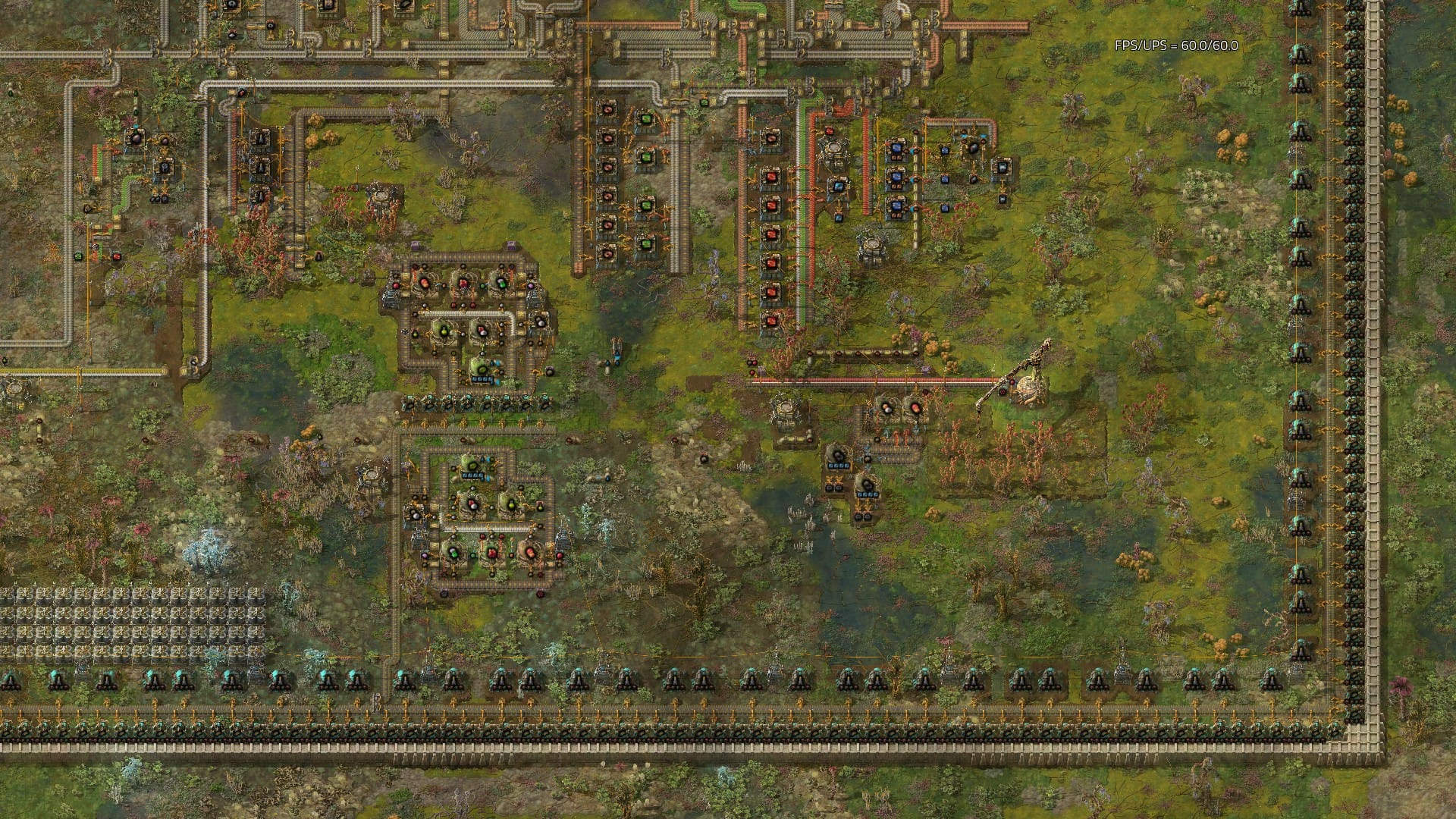
Fulgora
Fulgora is the third new planet. It’s a barren red desert planet with islands in a heavy oil ocean. While it has no native enemies, it’s frequently ravaged by lightning storms and everything has to be close to lightning rods to be safe - but at least you get free electricity from them.
Fulgora’s unique mechanic is scrap and recycling. Everywhere else in the game, you start with basic items and assemble them into more complicated products. On Fulgora, however, you mine scrap from the ground and then put it into recyclers to get intermediate products directly. If you need basic items, you have to keep recycling other items down to their base ingredients, so a large part of the production chain is reversed.
Because of the distribution of items you get from recycling scrap, you inevitably end up with hundreds of thousands of certain items while you are missing others. At some point, you have to start destroying some items, which, as a bit of a hoarder, feels a bit wasteful. Therefore, I don't like Fulgura as much as the other planets, but I want to come back and build a larger factory before I form a final opinion.
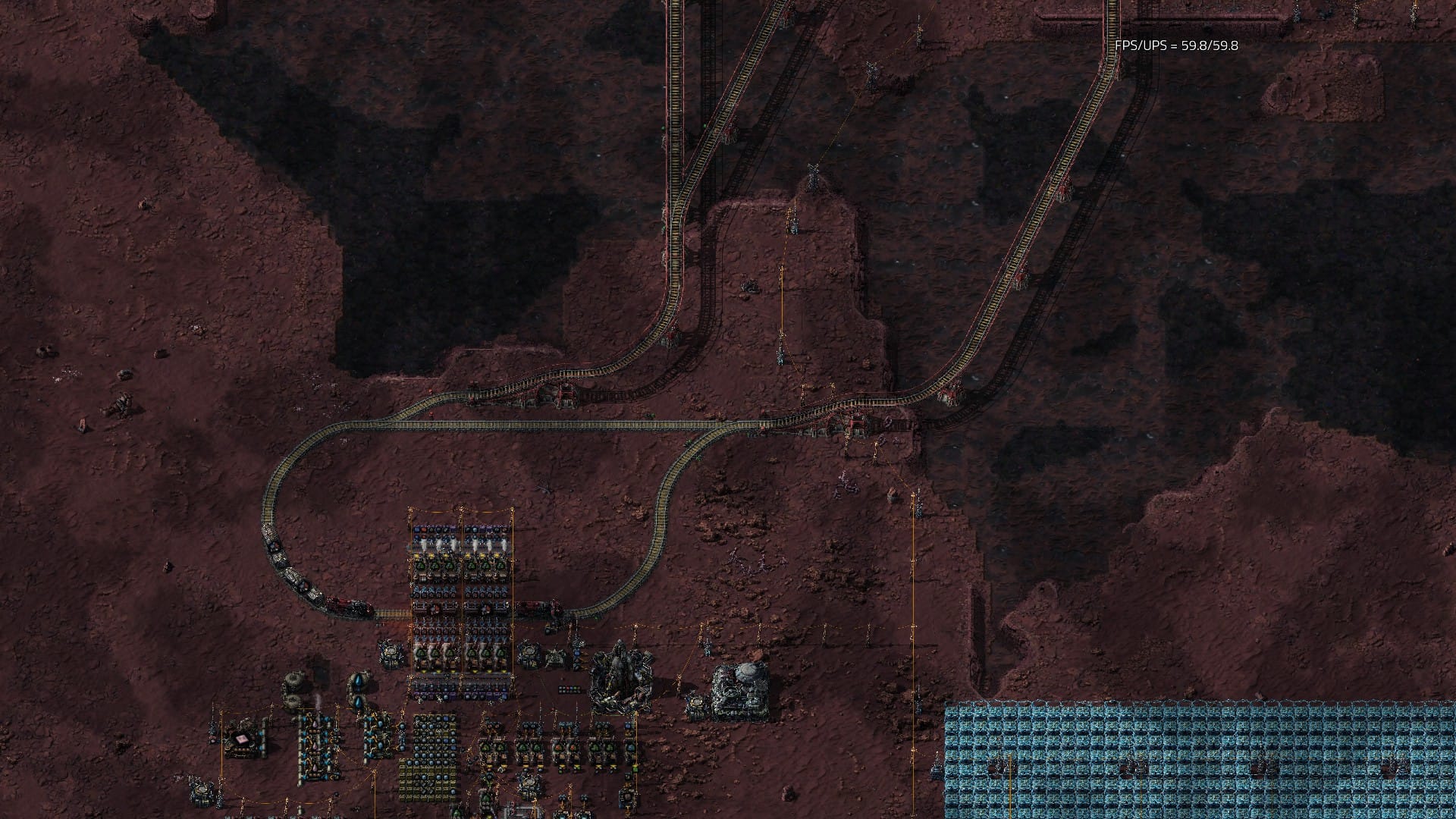
Aquilo
The fourth and final new planet is Aquilo, a very cold ammonia ocean planet with a few floating icebergs far away from the sun. Most buildings don’t work unless they are heated. Besides water and oil, no basic resources exist and almost everything has to be shipped in.
You can only unlock Aquilo with the science packs from all of the other planets, so it's the last planet you will get to. The route to Aquilo is more dangerous too because bigger asteroids start appearing that can only be destroyed with rockets.
Like Fulgora, Aquilo doesn’t have any native enemies either. Instead, the difficulty comes from the heating mechanic because you cannot use any of your designs from the other planets. In my opinion, this is what makes Aquilo great. Creating production designs is the most fun aspect of the game even though it can take a while to come up with a good solution.
Solar system edge and the shattered planet
Beyond Aquilo are two more locations on the space map: The solar system edge and the shattered planet. Nauvis, Vulcanus, Gleba, and Fulgora are 15,000km apart from each other and Aquilo is 30,000km away from Gleba and Fulgora. Getting to the solar system edge requires traveling 100,000km and on the way you will encounter even bigger asteroids that can only be destroyed with rail guns.
Successfully reaching the edge of the solar system is the win condition of Space Age, but just like launching a rocket in the base game unlocks a final science pack, so does reaching the solar system edge. From there you can start flying towards the shattered planet and on the way, Prometheum asteroids start appearing, which are used to craft Prometheum science packs required for infinite research.
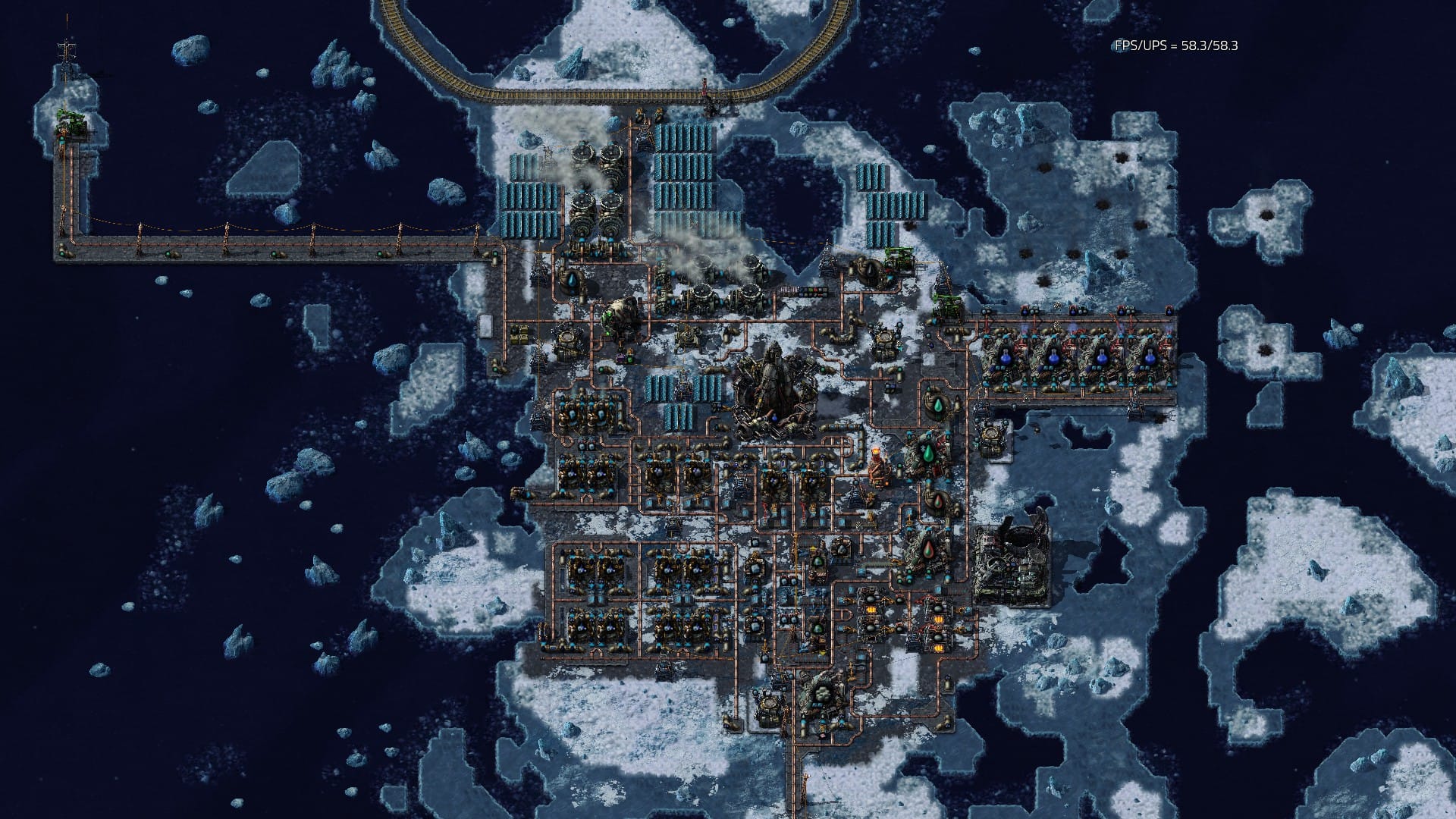
Getting to the solar system edge requires traveling 100,000km and on the way you will encounter even bigger asteroids that can only be destroyed with rail guns.
Quality
The Space Age DLC also introduced new item qualities. Items can have five different qualities from common to legendary and with higher quality comes better stats. For example, a common asteroid collector has only one collection arm, while a legendary one has six alongside other improvements like storage size, arm speed, and health. Stats that benefit from quality upgrades are marked with a blue diamond in the UI.
To get higher-quality items, you have to add quality modules to the production machines, although there’s only a small chance to create an upgraded item. The exact math depends on the number and quality of the quality modules used, but the chance to create a legendary item directly from common materials is something like 0.01%. However, you can also use higher-quality input materials and have a higher chance of getting a legendary result. With the recyclers from Fulgora that can recycle items back into their ingredients, you can also build setups that slowly accumulate higher-quality items by recycling the non-desired results.
I've only experimented a bit with item qualities thus far. Item quality is mostly a late-game feature if you want to build a highly optimized factory for infinite research, but I think it's a great feature because it opens up unique and powerful options for interesting and efficient contraptions.
Elevated rails
Another new feature is elevated rails. Trains have always been one of my favorite elements in the game and the ability to bridge over existing tracks, other buildings, and natural features opens up a lot more possibilities for designing interesting rail logistics systems.
The 2.0 update also introduced train schedule interrupts, which can add temporary stops based on conditions. The most common use case for this is train refueling: If the fuel is below a certain level, go to a specialized train refueling station, which is so much better than before when you always had to worry about distributing enough fuel everywhere.
The only way to summarize the Factorio Space Age expansion is that it's absolutely amazing. It’s one of, if not the best, DLC for any game I have ever experienced. It’s basically another full game on top of the already amazing base version. Four new planets, each with unique mechanics, and fully designable spaceships, alongside many other improvements, is so much new content to explore.
Another example of how much new content has been added: Factorio 1.0 had an achievement to win the game in 8 hours. In Space Age, this has changed to “win the game in 40 hours”. Building bases on 5 planets and the interplanetary logistics system required to ship items between them is complicated and takes a long time; my discovery run is already a lot longer than that and it’s not even complete yet.
The DLC has the same price as the base game, but in my opinion, it’s absolutely worth it because it adds so much new content and depth. And for the players for whom 100,000 km of dense asteroids on the way to the solar system edge to win the game isn’t enough, there is the ultimate challenge of getting to the shattered planet: 2,000,000 km of even denser and stronger asteroids. Designing a ship powerful enough to get there will be an extremely difficult challenge and only the most dedicated players will ever make it. Are you one of them?
